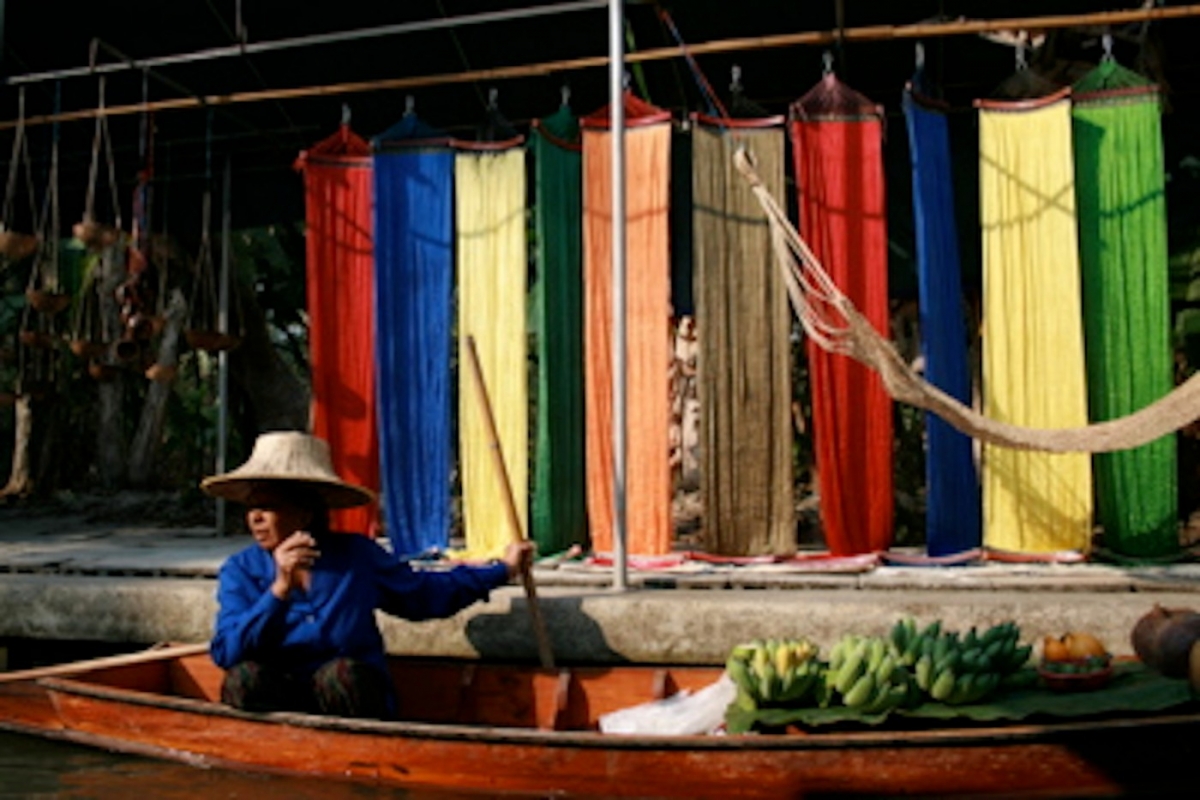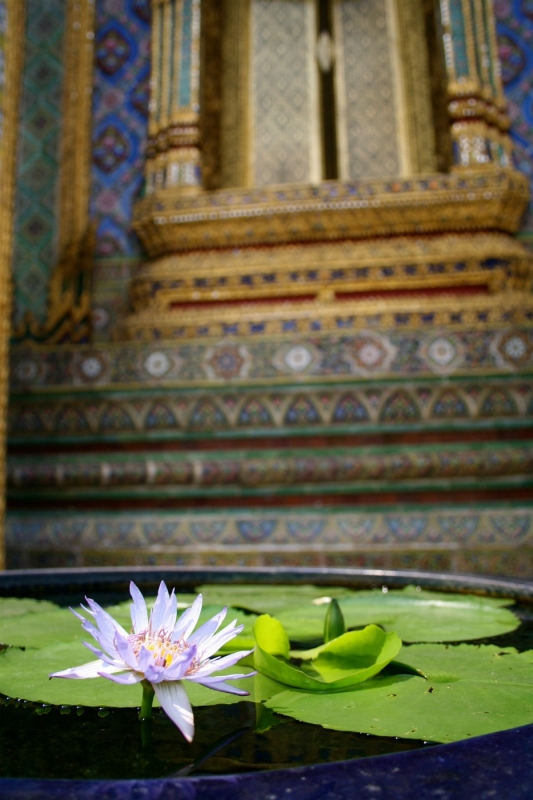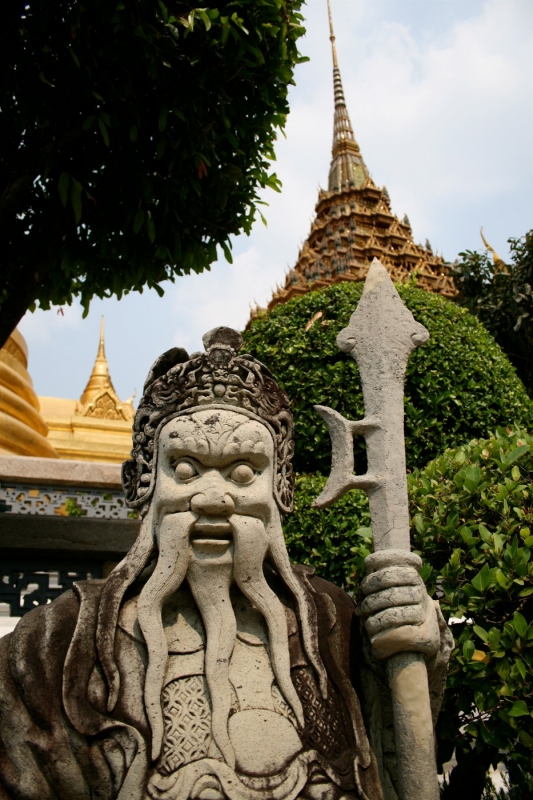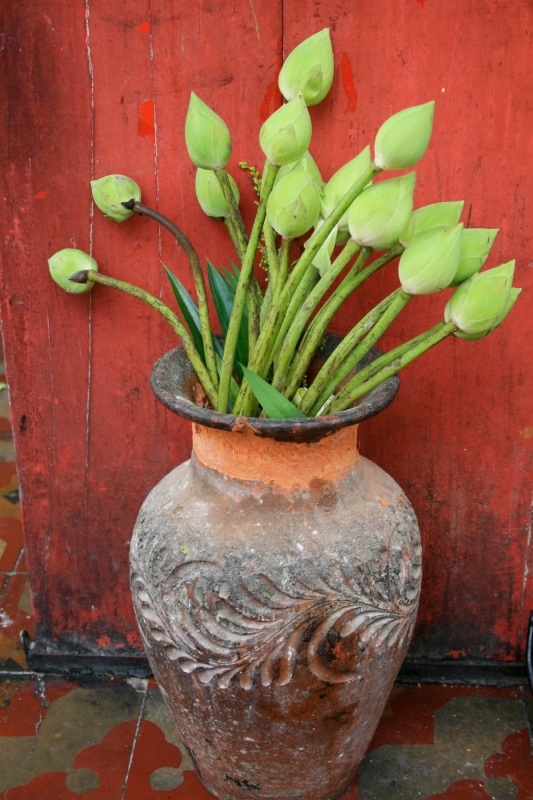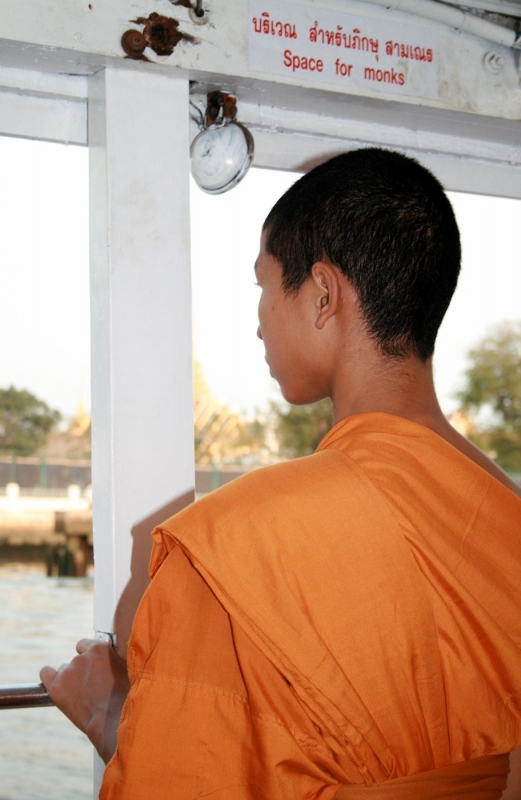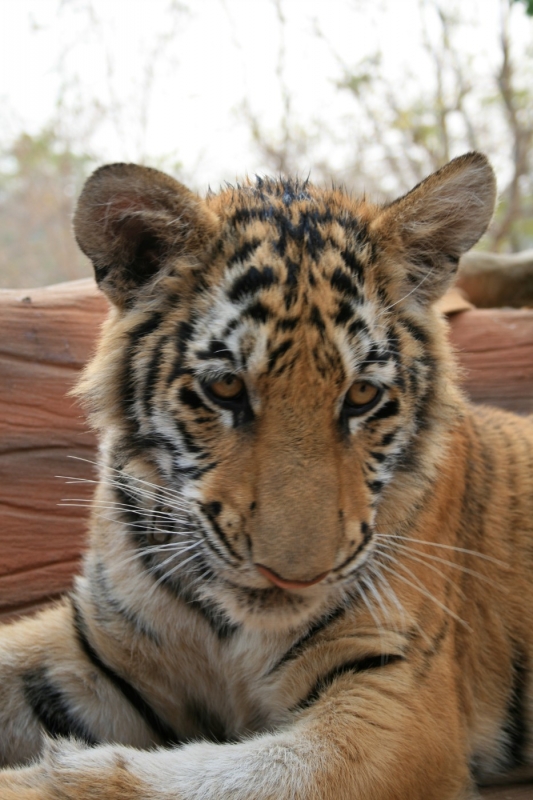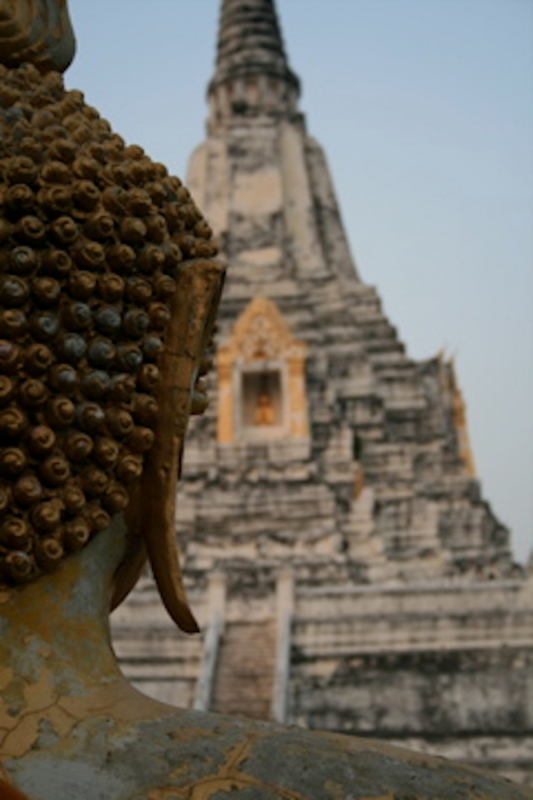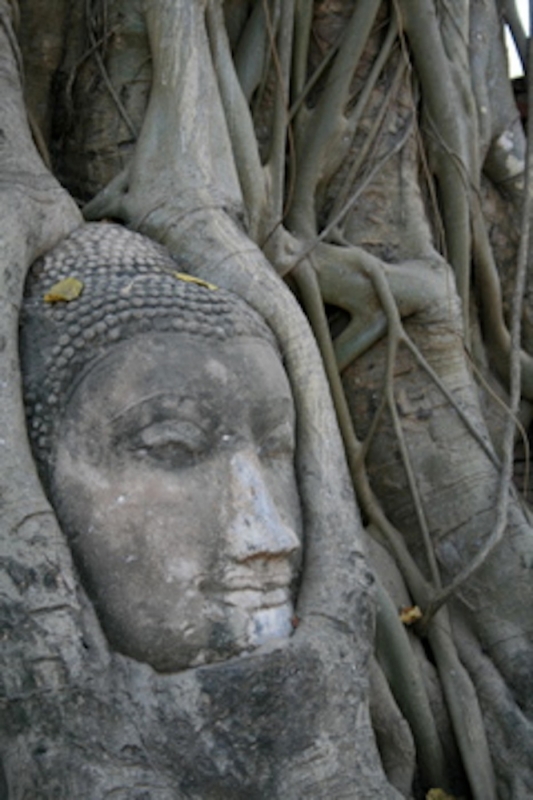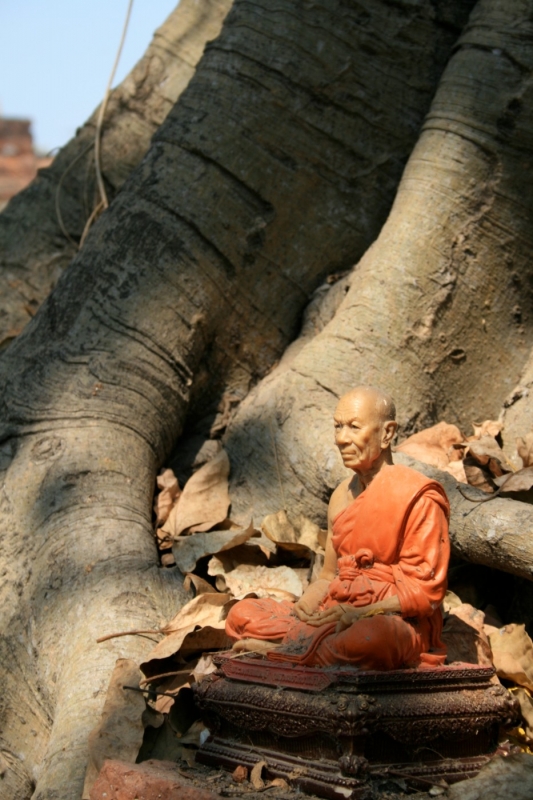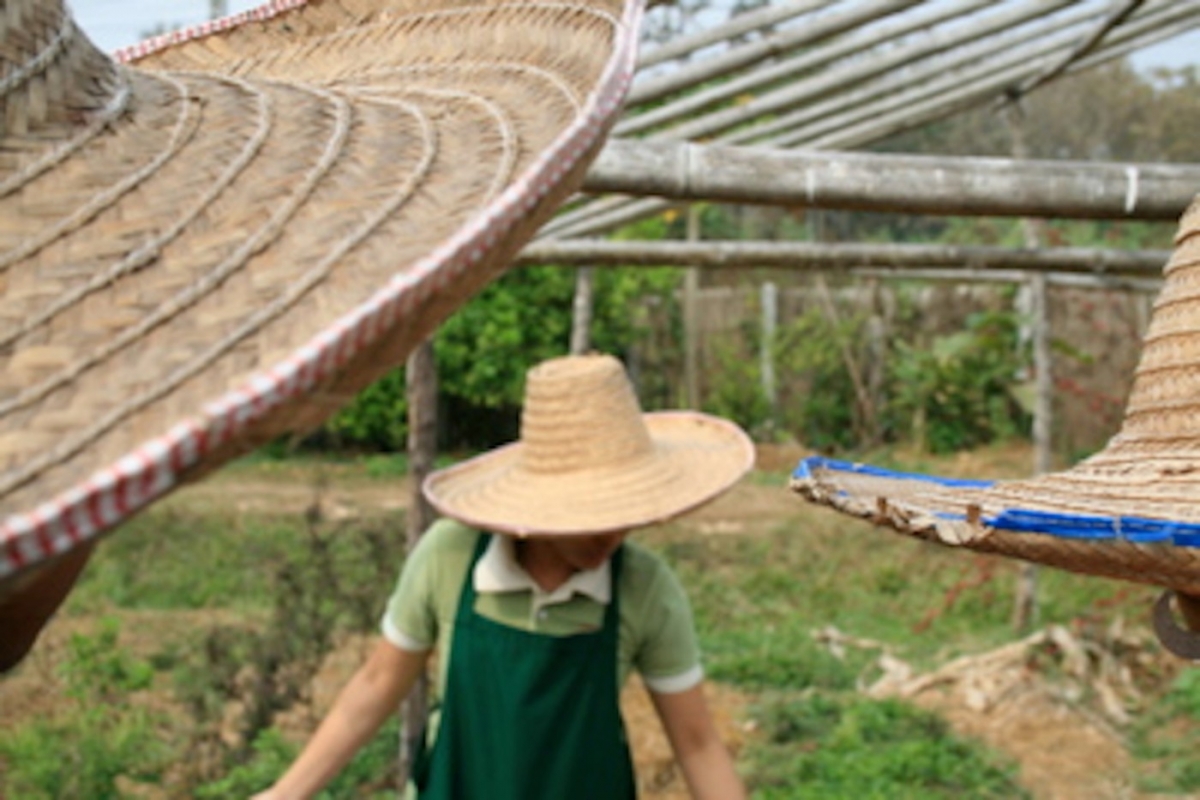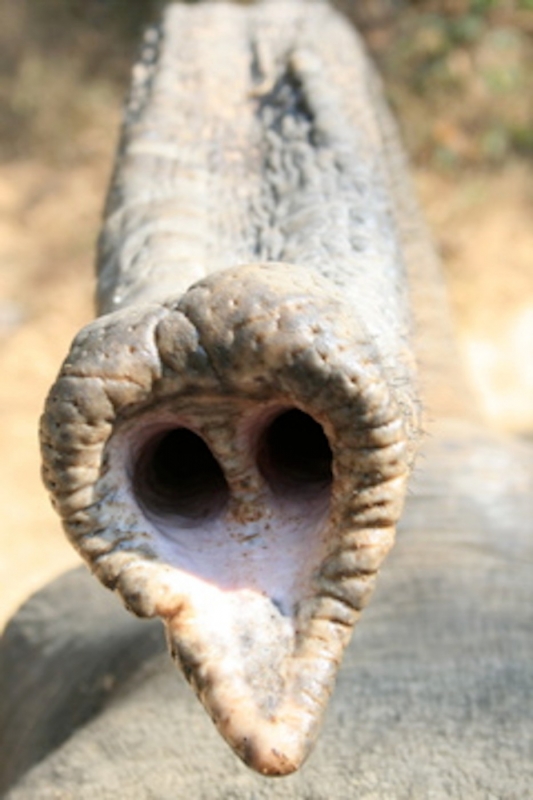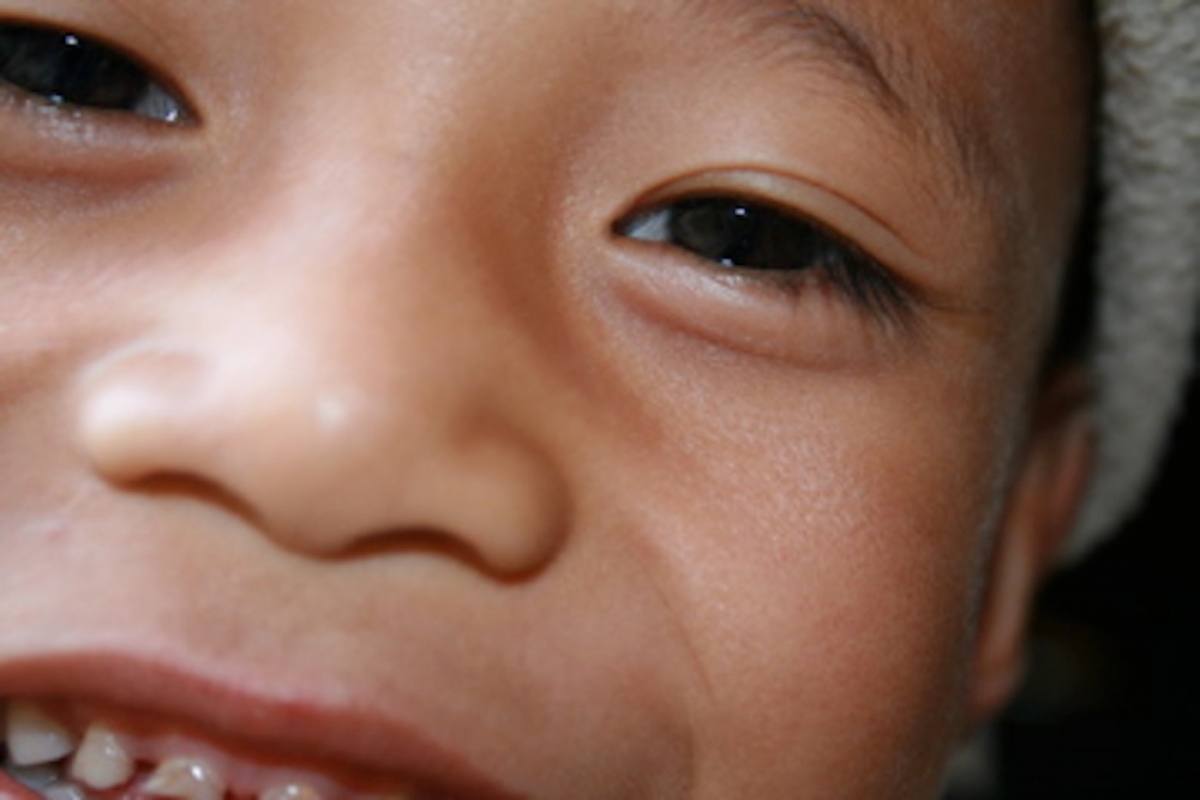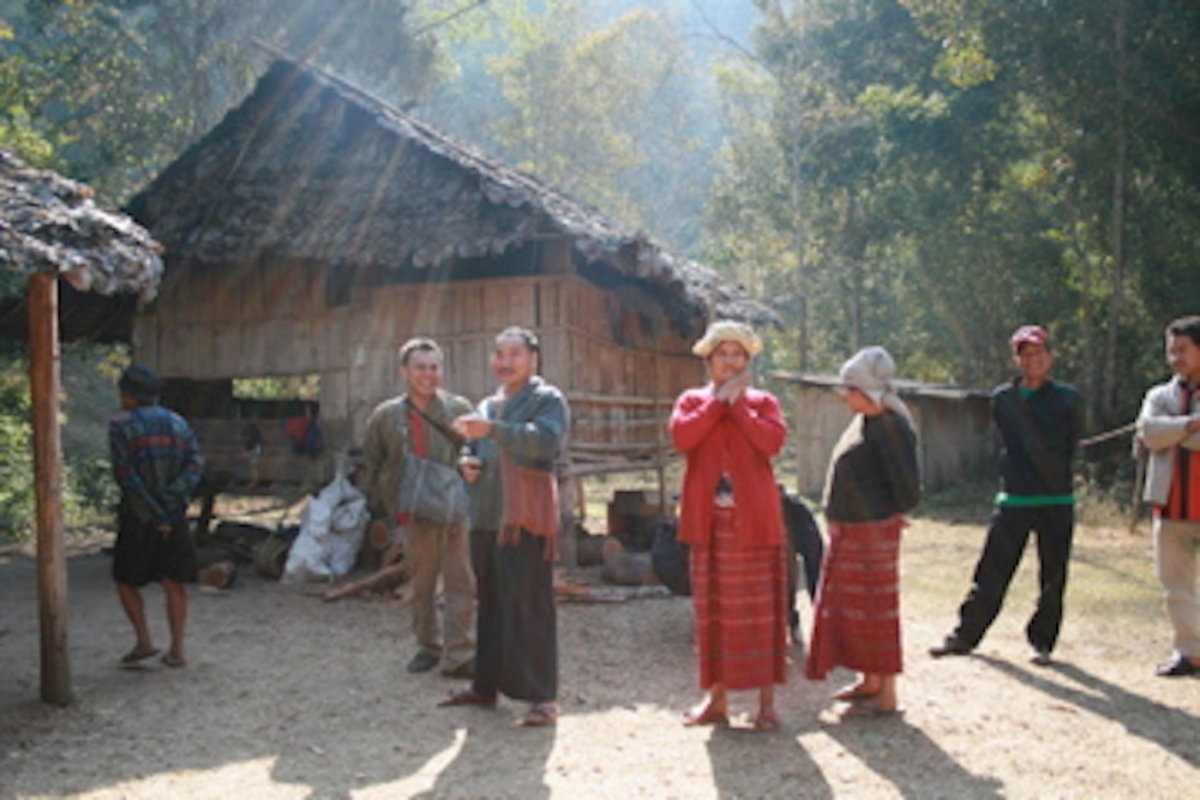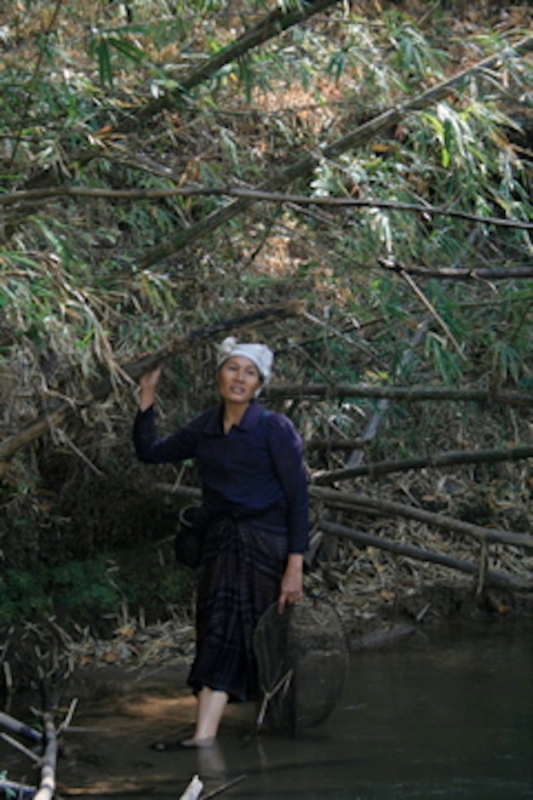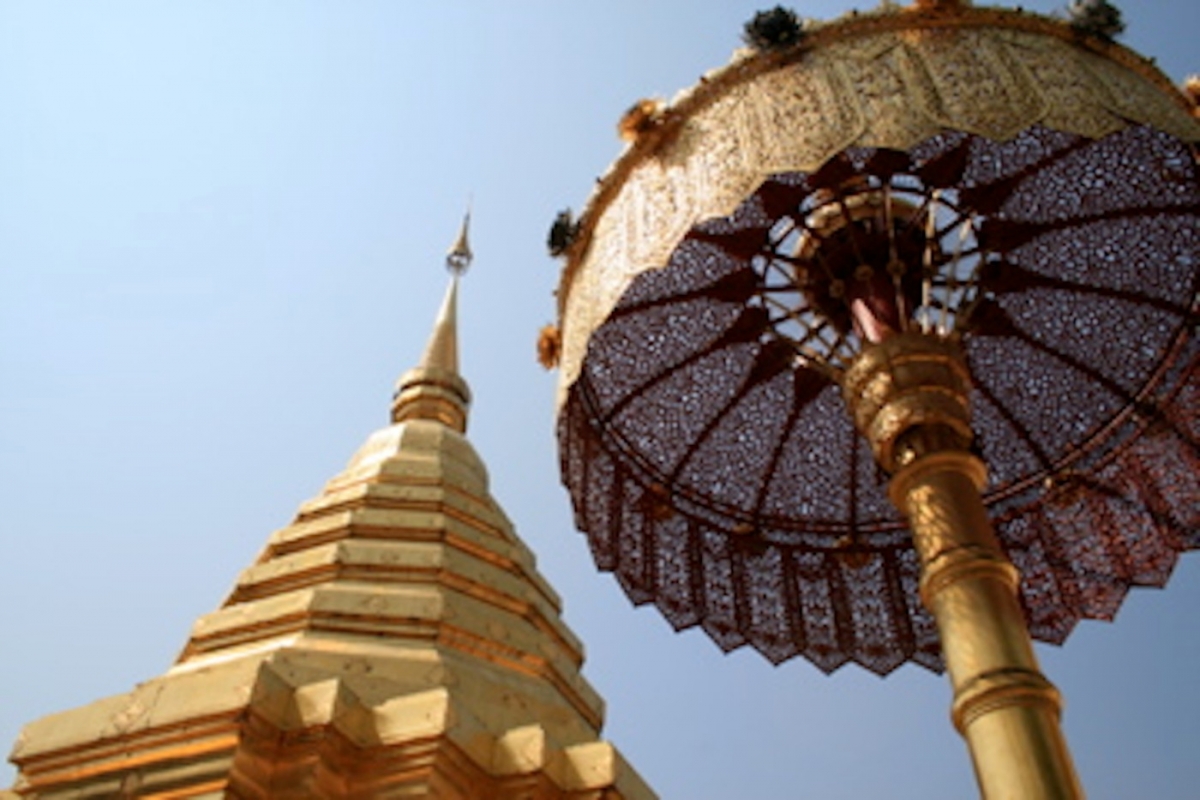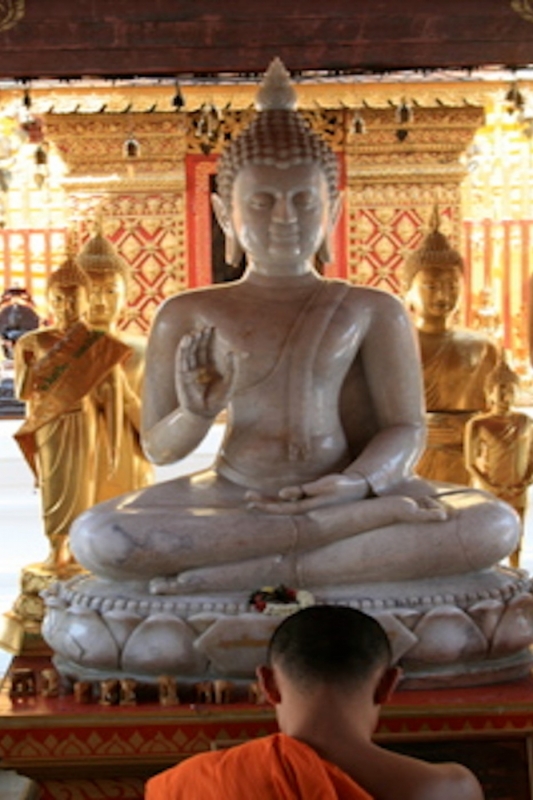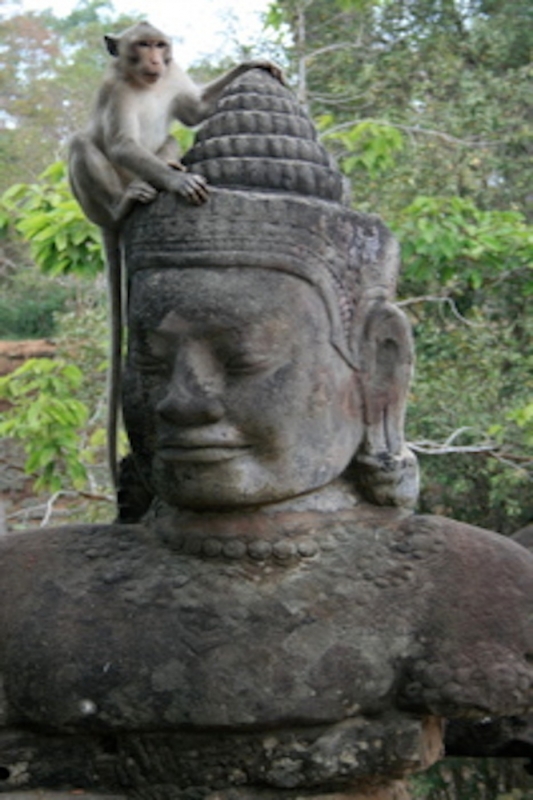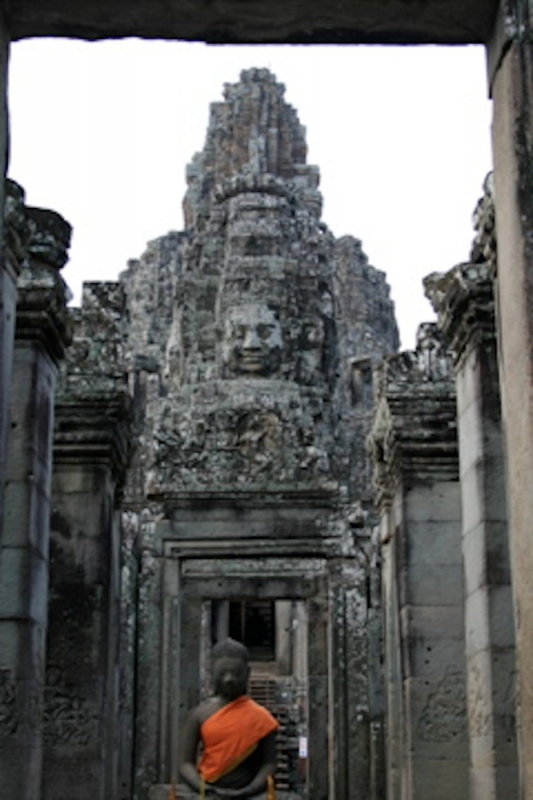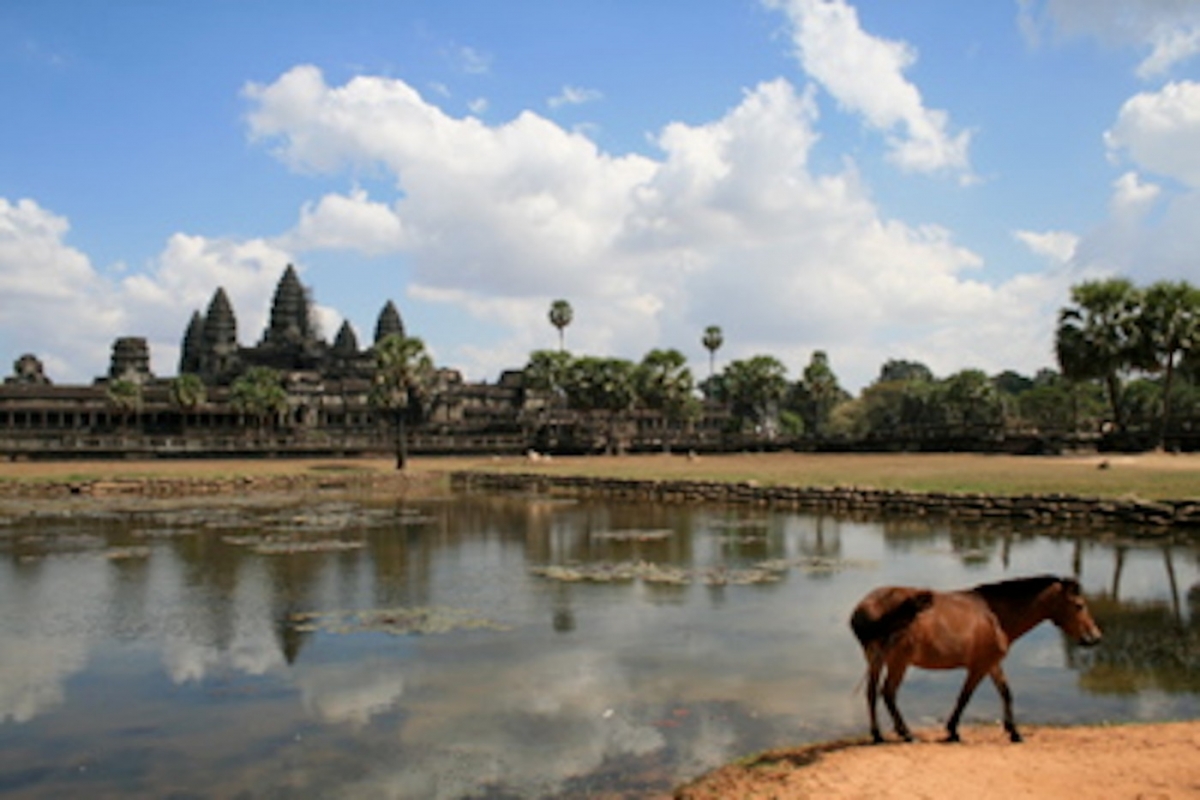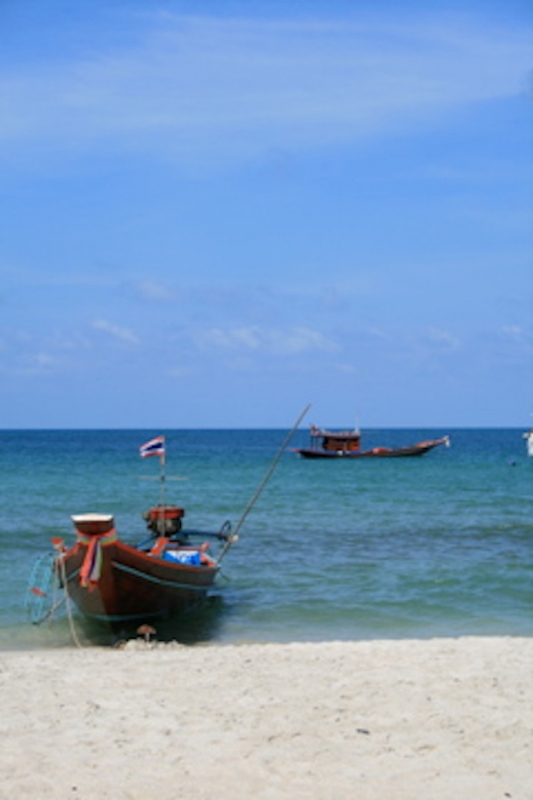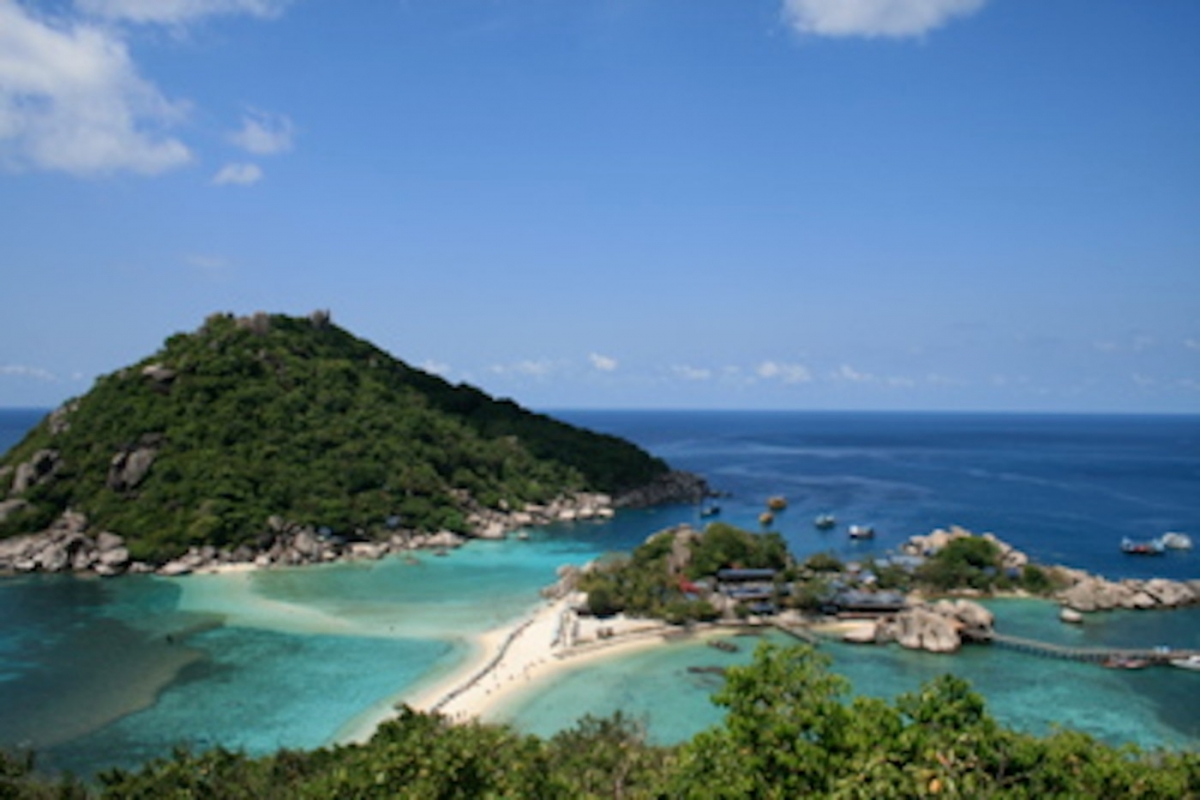∞ Originally published in the Vancouver Sun and Regina Leader Post, April, 19, 2009. ∞
I’m two hours into a backroads motorcycle ride through the Cambodian countryside — wind cutting the baking 34-degree heat, dust flying up from the road — and as I ride I’m treated to a parade of rural Khmer life.
Two women bicycle by in peaked straw hats, a farmer passes with a load of hay strapped to his scooter, another hauls a slaughtered hog, kids ride three to a bike, parents with toddlers sit four to a scooter.
We weave around each other, trying to avoid the worst of the road’s ruts. With every teeth-rattling, spine-shattering swerve, I remember my airport taxi driver’s ominous warning after I landed in Siem Reap. Three tourists die every month trying to see the wats (temples) from the back of a scooter, he’d said. I thought he was just trying to land a gig as my chauffeur. Now, I’m not so sure.
It clearly takes a sense of adventure to get here, perhaps not on the Indiana Jones scale, but real enough. As I clutch my driver Reurm for dear life, we buzz past school girls in white blouses and blue pinafores bobbing through rice paddies spiked with lone palms and roadside shacks where naked babies play with slingshots and women dressed in traditional sampot skirts or krama scarf-turbans sell palm liquor in old Johnnie Walker bottles.
But the effort to uncover Angkor’s Beng Malea — a remote 12th-century forest shrine more than 60 kilometres from the heart of the ancient city of Angkor, which is a UNESCO world heritage site — proves well worth my bruised tailbone.
Angkor, Cambodia’s star attraction, is considered the seventh wonder of the world, and its archeological mysteries lure four million visitors a year. The temples of Angkor (“holy city” in Khmer) were built between the 9th and 13th centuries when the kingdom was at its height, with a million people.
It was the seat of the Khmer empire, whose influence extended into Thailand, Laos and Vietnam, and it was the region’s most sophisticated city for over 500 years. Archeologists believe it was the largest pre-industrial city in the world.
In the 13th century, faced with incursions from the Thais, the kingdom fell under attack and by 1432 the king moved the capital to Phnom Penh. Over time, the region’s stunning wats or temples (the best known being Angkor Wat) with their gorgeous lotus-shaped towers, vine-twisted monuments, moats and stone-carved murals, were abandoned to the jungle. But they were not forgotten. They were rediscovered by French naturalist Henri Mouhot in the 1860s after he wrote breathlessly of his visit to the ancient temples.
It’s that sense of new discovery that comes over me as I lurch off the scooter and stumble through the as-of-yet barely touristed jungle temple early one morning and step into another world.
Beng Malea is a massive, kilometre-square crumbling monument strewn with tumbled rocks the size of small cars, set quietly in the jungle. It was built by King Suryavarman II, who also built Angkor Wat, But in contrast to Angkor Wat’s tourist throngs and iconic status, Beng Malea seems forsaken, lost and abandoned. Here, the trees have taken over, their roots digging between the crevices of the stones, cracking and distorting carvings in their journey to find water — nature returning civilization to the earth.
I spend a meditative hour wandering around its colossal walls and along the ramps in the interior of the temple that lead up to its remaining stone ramparts. It’s breathtaking, all the more because it’s struggling not to fall apart.
Cambodia itself has profoundly struggled, and tourism to its ruins is just beginning to help it rebuild.
The nation of 14 million was bombed during the U.S. war in Vietnam to flush out Viet Cong, creating two million refugees. A famine followed in 1975 and that same year the rebel Khmer Rouge took power. Pol Pot’s Communist Party renamed the country Kampuchea and tried to return it to its agrarian roots, forcing educated Cambodians to work on farms, killing doctors and teachers and outlawing anything Western.
One to three million people were tortured, slaughtered or died from lack of food or medicine. A Vietnamese invasion in the late 1970s ousted the regime, but the Khmer Rouge rebels continued to fight in pockets throughout the countryside: 1999 was the first full year of peace in 30 years.
There are reminders of war everywhere. On the streets, it’s rare to see a man over 40. At one wat-side stall, a young girl with a stack of plastic-wrapped books offered a slim volume, reading off its title: Children of Cambodian Killing Fields. That a child would have to know about her country’s brutal history, let alone sell the tragic story to make a living, was a sobering thought. But the development and dollars that accompany tourists to Angkor Wat — arguably the country’s top renewable resource — seem to be having a positive impact.
Angkor Wat itself, the world’s largest religious building, makes a profound impact. The temple is surrounded by a huge moat that has more in common with a river than a man-made defence. Visitors approach from a causeway that spans the water and is guarded with statues of mythical serpents — seven headed nagas — warding off invaders.
The temple was begun in 1112 by King Suryavarman II to honour the god Vishnu and serve as his crypt. Today most tourists see it by sunrise or sunset, watching the light pick out details in the 65-metre high stone prasats (towers) and staying to examine the intricate bas-reliefs of devas and asuras (gods and demons) and 2,000 apsaras (divine nymphs) that decorate the palace.
Nearby, lie more remarkable ruins. The gates of Angkor Thom, a three square-kilometre city built by King Jayavarman VII starting in 1181, are flanked with giant, Buddha-like statues — passing through can feel like entering another world. The otherworldly Bayon temple lies on the other side.
The Bayon, with its 37 towers chiselled with dozens of enigmatic, all-seeing Buddha faces (some say they resemble the king himself ) offers an eerie introduction to Angkor’s wonders. Eyes seem to follow you as you explore the temple, climbing over ruins, ducking under lintels, running fingers over the ancient bas-reliefs, and clambering up stone steps. The mysterious Bayon is one of Angkor’s most affecting temples.
For those put off by the two-hour trek to Beng Malea, the temple of Ta Prohm is a fine substitute. Ta Prohm is perhaps one of the most atmospheric of the inner temples, overgrown with thick vines with slabs of rock smothered in snaking tree roots. No wonder it was used in scenes from Tomb Raider with Angelina Jolie. The 12th-century temple has been left as it was found — and has become beautifully meshed with the jungle.
It can be exhausting playing amateur archeologist all day in the 30- degree heat but, thankfully, Siem Reap has lots to offer in the way of rejuvenation. The city comes to life after sunset and though Siem Reap is a small town, restaurants, night markets and street stalls in the tourist-centric core remain lively well after midnight.
Start the evening with a leisurely dinner in the air-conditioned Angkor Palm restaurant near the Psar Chaa (Old Market) and admire the delicate silk wall hangings before tucking in to a Khmer feast featuring the Cambodian national dish, fish amoc. The creamy coconut-milk fish curry is served with jasmine rice, and the restaurant offers a host of other Asian bites, from pumpkin soup to a spicy papaya salad called bok l’hong and a peppery beef dish called lok lak.
For a communal dining experience share a Khmer-style hot pot (yao hon) with a friend, dipping beef, shrimp, cabbage, rice noodles and mushrooms to cook in bubbling broth. Or try a meal at Cambodian BBQ, where guests sizzle exotic meats — crocodile, snake and ostrich are available — on their personal phnom pleung or grill.
French colonial roots run deep in Cambodia, so good bread here is almost as common as rice, and vendors balance baguettes on their heads on their morning rounds.For a taste of colonial cuisine try Le Malraux (named for French adventurer Andre Malraux, arrested for stealing temple bas-reliefs in the 1920s), for salade Parisienne, salmon rillettes and cream puffs amid Art Nouveau interior. Stop for dessert at the Blue Pumpkin café, which offers exotic ice cream flavours like banana galangal, green lemon and kaffir lime, and ginger and black sesame.
After dinner, take care of wat-wandering tensions with streetside foot massages. They’re a dime a dozen (actually, about $3 US for half an hour). Or enjoy an affordable body massage ($10) or pedicure ($7). Several shops also offer massages by the blind; at Seeing Hands Massage on Sivatha Road, part of the proceeds go back into training Cambodia’s vision-impaired citizens in the trade.
But for a more refined experience step into Bodia Spa, a cool, inviting retreat across from the Old Market. A chilled ginger tea and cold herb-infused facecloth greet clients as they enter the white, high-design minimalist space en route to their oil body massages and herbal compresses.
Once refreshed, practise your bargaining skills at the Night Market off Sivatha Road — where endless rows of silk scarves beckon — or shop for social good at several local stores that support non-profit ventures. Rehab Craft near the Old Market sells handmade carvings, wallets and silks made by disabled employees and Artisan’s D’Angkor trains poor youth in carving.
Top off the evening with a drink or two on the terrasse of the Red Piano, a restored French Colonial home with a sweeping corner balcony. Raise a glass of Angkor or Chang brand beers or sip a “Tomb Raider” cocktail (the restaurant was known as the place Jolie and crew hung out during filming) and toast to the spirit of Cambodia, to the beauty of Angkor, and to the adventurer in you.
Elaine O’Connor tells travel tales at Whywanderlust.ca and on Twitter @WhyWanderlust.
If you go:
- Passes to Angkor are sold at the gate of the archeological park for $20 US for one day, $40 for three days and $60 for a week. Two-day passes aren’t offered. A three-day pass will give you time to see the central temples and to explore the countryside to see more remote treasures. There are as many ways to get to the ruins as there are ruins. You can hire a motorcycle, motor- cycle-pulled trailer, car, mini-bus or bicycle. Feeling adventurous? Try an elephant, hot-air balloon or heli- copter.
- Prepare for extreme heat — high SPF sunblock, wide-brimmed hats, long sleeves, sun glasses and litres of bottled water are crucial. It’s easy to get sunburned and dehydrated staring with awe at yet another astonishing apsara. After 10 a.m. the heat is unbearable. Hydrate early and often. Huge young coconuts, cracked open and strawed, offer refreshingly cold, sweet coconut water.
- Don’t bother stocking up on Cambodian currency (the Riel; about 3,300 Riels to $1 CAD) before your trip. Most prices are stated in U.S. dollars and ATMs dispense cash in U.S. dollars. Locals prefer hard currency, though they will accept riels.
- Like Cambodian cuisine? Learn to cook it at local restaurant-led cooking schools. Le Tigre de Papier offers a morning or afternoon two-hour, two dish course for about $12. You can eat your mistakes and they’ll offer dessert. The Angkor Palm restaurant also offers lessons.
- Luxury hotels have moved into Siem Reap with a vengeance. Tourists can stay at five-star resorts for three-star prices. Raffles Grand Hotel D’Angkor, Hotel de la Paix, and the Amansara are popular choices. There are plenty of reasonable guest-house options for the budget traveller that still offer air-conditioned rooms. Shadow of Angkor, Popular Guesthouse and Sala Bai Hotel are reliable options. If you do splash out, make sure your hotel has a pool — it can help ease the effects of the 44-degree summer heat.
- Learn more at Tourism Cambodia.

I’m a different kind of travel writer. I craft long-form, cover-worthy feature-length travel articles with style and substance. I tell travellers not just what to do, but why. Find out how to work with me.


